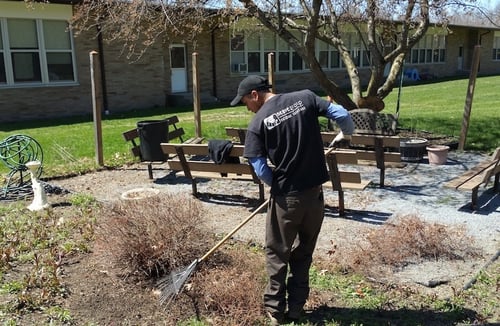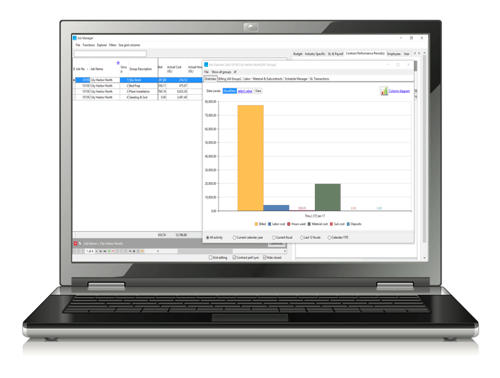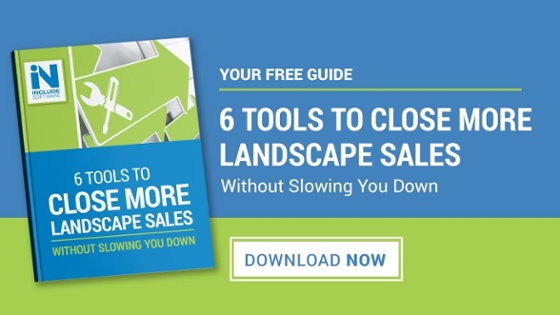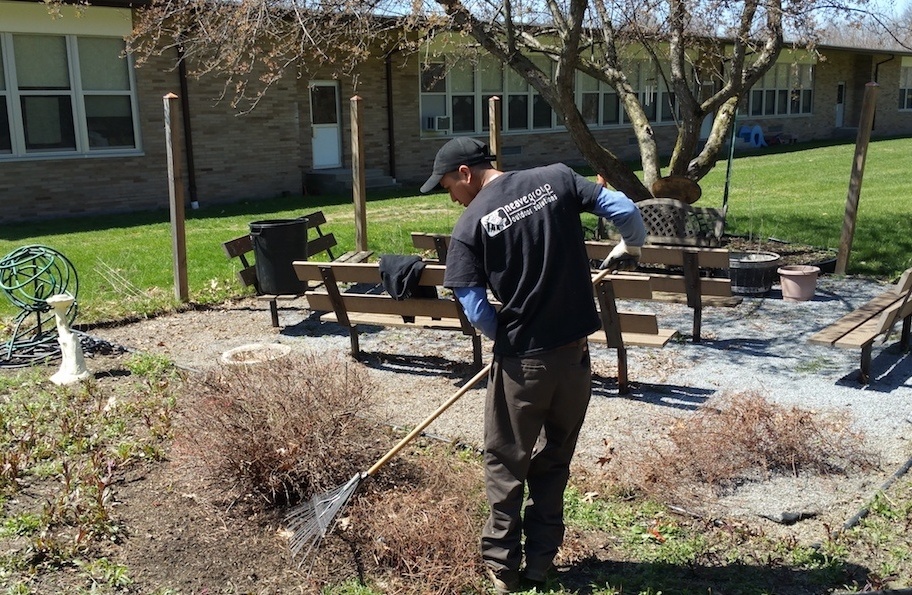 In the landscape business, repeat clients are incredibly valuable. That’s because landing repeat work requires a lot less investment of time and money than it does to acquire brand new clients. But what if that repeat work isn’t profitable? Even worse, what if that repeat work puts you at a loss? If that’s the case, every year you send out that landscape contract renewal, you’re digging yourself a deeper and deeper hole when it comes to profit loss.
In the landscape business, repeat clients are incredibly valuable. That’s because landing repeat work requires a lot less investment of time and money than it does to acquire brand new clients. But what if that repeat work isn’t profitable? Even worse, what if that repeat work puts you at a loss? If that’s the case, every year you send out that landscape contract renewal, you’re digging yourself a deeper and deeper hole when it comes to profit loss.
Now imagine you have multiple clients like this. Undoubtedly, it’s dragging you down. And maybe you don’t even realize it yet.
It sounds troubling, but it’s more common than you think. It’s easy to get caught up in the day-to-day operations of running a landscape business and to lose sight of how profitable your clients may be. Analyzing each contract as it comes up for renewal can feel time-consuming and overwhelming without the right tools to examine that data. As a result, many companies just make a knee-jerk reaction to renew all contracts that come up for renewal. Unfortunately, this can have a detrimental impact on business.
Smart businesses are examining landscape contract renewal letters before they go out the door. But they’re doing it in an efficient way that isn’t slowing business down. They’re analyzing data and making decisions based upon what that data shows. And as a result, they’re able to continue to boost profit rather than let the company slide into a hole right under their nose.
If you’re sending out renewals without any further examination, it’s important that you take a closer look. Here are 5 steps to take before sending out a landscape contract renewal letter to your existing clients.
1. Find Red Flags
Before you send out a landscape renewal letter, examine the contract for some red flags that this might not be the ideal client to renew. The biggest red flag to watch for is your budgeted hours versus actual hours. Is the work being performed within the time frame that you allotted? If it’s not, and you’re perpetually underbidding, then you need to stop that renewal and get your prices back on track.
Another big red flag that your contract is not as profitable as it should be is the number of pro bono visits made to the account. A high-touch client may require multiple visits outside of the regularly scheduled ones. With clients that require a lot of extra hand-holding, it’s valuable to analyze whether it’s worth that extra time and effort. Those extra account manager visits are sort of a gray area where it’s not a tangible profit loss. But considering the fact that time is money, and your account managers could be spending it more wisely, it definitely makes an impact.
2. Consider Changes
 Once you’ve closely examined your contracts, and spotted some red flags, you must ask yourself whether they can be fixed. For instance, instead of immediately dropping the client that requires a lot of extra attention, you might consider whether the hand-holding can be addressed with a possible solution. Landscape business software, for instance, could allow you to automate some of the communication such as notifying the client when the work was performed or when you’ll be returning. If that kind of automation solves the problem, you can get that client back on track toward being an obvious renewal.
Once you’ve closely examined your contracts, and spotted some red flags, you must ask yourself whether they can be fixed. For instance, instead of immediately dropping the client that requires a lot of extra attention, you might consider whether the hand-holding can be addressed with a possible solution. Landscape business software, for instance, could allow you to automate some of the communication such as notifying the client when the work was performed or when you’ll be returning. If that kind of automation solves the problem, you can get that client back on track toward being an obvious renewal.
Of course, you’ll also want to determine if changes need to be made to your pricing. We had one client who, upon using Asset to examine their budgeted vs. actual hours more closely, realized that they’d been underbidding the work for a long-time landscape maintenance contract. This led them to a lot of loss that they couldn’t recoup as it had gone on for many years.
Other areas that can be examined are within the landscape contract specifications. There may be a need for changes to staff, materials, or equipment. These are all internal aspects of a job that should be examined in regards to profitability. When our example client determined that one of their clients was not profitable, they went through those internal changes. They switched up the crews and they more closely examined the materials and equipment they were using. But those weren’t the problem.
Unfortunately, the amount that they needed to raise their price in order to be profitable again was too high to ask. Instead, they had to let go of that client (which we’ll get to next). That’s never an easy decision but one that can be made with the use of landscape business software in order to analyze data.
3. Determine If You Need to Say Goodbye to a Client
Before sending out that landscape contract renewal letter, it’s important to be certain that this is a client that you want to keep. A lot of companies think they want to keep every client they have, but the truth is that some clients can hurt your business. In the real-life example above, the client (at no fault of their own) was putting the company in a hole. The landscape company would need to raise their prices by 40 percent in order to be profitable again. So, instead of a renewal letter, the landscape business owner wrote a letter in which they respectfully declined the future business.
Now, just because a client isn’t highly profitable does not necessarily mean they should be terminated. A lot of times with renewals of landscape maintenance contract, landscape companies determine that even if they’re just barely making a profit, or even breaking even, that they will renew that contract because of the upsells they get from those contracts.
This is another area where landscape business software can help you to analyze the data and make an educated choice based on client history. The margin on upselling enhancements is vastly different from maintenance and often quite profitable. Therefore, making one or two percent, knowing that you’re going to upsell X amount of dollars in enhancement work, may be worth it. But that decision should be made based on a yearly comparison.
4. Addressing Changes with a Client
 If you determine it makes sense to keep a client, but you need to make changes in order to boost profitability, then it’s important that you communicate those changes with your client. Good communication is valued and it benefits you to keep clients in the loop whether you’re raising prices or making crew, material, or equipment changes so that you don’t have to raise the price.
If you determine it makes sense to keep a client, but you need to make changes in order to boost profitability, then it’s important that you communicate those changes with your client. Good communication is valued and it benefits you to keep clients in the loop whether you’re raising prices or making crew, material, or equipment changes so that you don’t have to raise the price.
Your clients will see a lot of value in the fact that you keep them informed. And if you’re making positive changes that will affect them in a positive way, it obviously behooves you to let them know.
Similarly, if you’re making changes that they may view as negative (such as increasing their price), it’s beneficial to explain your reasons and to keep them informed, rather than to spring it on them or do it in a way that appears sneaky. The landscape contract renewal letter is the perfect opportunity to communicate this information clearly.
5. Making Calculated Decisions
Ultimately, all of these steps can be made easier with the use of landscape business software, which will allow you to analyze the data in a much more detailed way than any other method. It would have to be someone’s full-time job to look through each landscape contract and analyze the history of that data. But with landscape software, that information is at your fingertips.
You can answer important questions like:
- What were my budgeted vs. actual hours on the job(s)?
- How many times did the account manager have to go out to this property?
- How many years did I upsell an enhancement to this client?
With that information in-hand, you’re now able to make strategic and calculated decisions about the profitability of each of your clients. You can then move your company forward, rather than continuing to dig a hole.
By easily collecting the data you need and making smart decisions, you’ll also boost profitability without necessarily even needing to raise your prices. When a company isn’t analyzing data, and their bottom line isn’t where it needs to be, they often arbitrarily hike up prices, thinking that’s their only course of action.
But with landscape business software, you may be able to boost profitability without a price increase by making other changes such as:
- Smarter material acquisition: With a better grip on materials you’ll need for future jobs, you can now buy material in bulk and save money.
- Boosted efficiency: By taking care of those clients that require hand-holding (or multiple phone calls) with automated communication, you’re not spending unnecessary time managing your client.
- Better, faster equipment: Upon closer examination of your data, it’s obvious that you need more efficient equipment for the work you’re doing.
These are just some ways that a better understanding of your data will help you to increase profitability without necessarily increasing your price. We’ve even had some clients say they’ve been able to decrease their price. Imagine that—sending a landscape contract renewal letter out and telling your clients you were able to decrease your price because you’ve gained new efficiencies! It’s almost unheard of in this industry but it could do wonders for referral-based recommendations and also gain you valuable upsells in the future.
At the end of the day, all of this can be possible with the implementation of landscape business software. With the ability to more closely examine data, you can make smarter business decisions when it comes to your renewals. That will equate to more profitability, happier clients, and all-around better business. If you’d like to find out how Asset can improve your contract renewal process, contact us for a free demo or give us a call at 800-475-0311.
Watch This Video to Learn How Asset Can Help You Sell More Landscaping Work
Image Sources: Neave Landscaping



